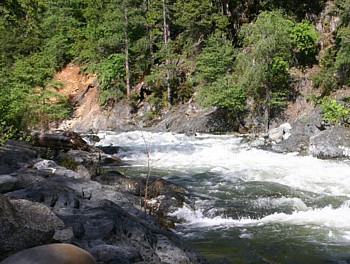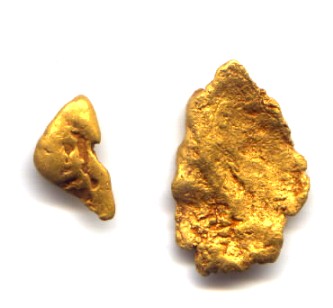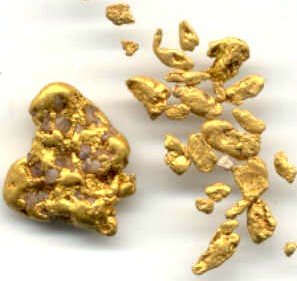
California has produced more placer gold than any state in the USA. While some nice gold has been mined several regions of the state, there is little question that the best known gold field is the famous Mother Lode country along the western side of the Sierra Nevada Range. Prospectors armed with a wide variety of mining equipment have been very successful, producing some good gold. From dredges and sluice boxes, to dry washers and metal detectors just about all types of mining equipment have a place here. This page has information and maps covering a number of placer locations in California.
Prospecting In the Mother Lode Country

The foothills of the Sierra Nevada located to the west of Reno are home to the famous Mother lode chain of gold districts in California. Large parts of this region are within a few hours drive from Reno. This area was quite rich. California ranks second among the 50 states in gold production, with historic production of roughly 110 million ounces. About 60% of that total was placer (the rest was lode). Most of this placer gold production occurred before 1950, but sporadic mining and prospecting work has continued ever since. Dredgers and other individual prospectors continue to work the streams in this region, and small but exciting finds continue to be made. In many areas, nearly every stream and river has produced recoverable placer gold. The mother lode country has also produced a considerable number of large nuggets, including some of over 100 ounces. This chain of rich gold districts is associated with a belt of metamorphic rocks forming the western side of the Sierra range. Both hard rock quartz veins as well as placer gold deposits have been productive.

Much of the placer gold recovered in California came from Hydraulic Mines. These operations used pressurized water to wash away great depths of gravel, and the gold was recovered in sluice boxes. For environmental reasons, this practice was ended in the 1880s. Some of the Hydraulic mines were located along river benches, but most were located along the pathways of ancient rivers, called tertiary channels, which flowed long ago during tertiary times. These hydraulic mines cover many tens of thousands of acres in the gold country. These same hydraulic mining areas are usually good for prospecting with a metal detector. The floor of these workings usually have some gold remaining. Although there were some coarse nuggets recovered from these channels in some areas, most of the gold was fairly fine grained.
In many California placer districts most or all of the gold is found at or near bedrock, which can be a considerable depth. Exposed bedrock along the gold bearing streams can offer more prospecting opportunities, especially to prospectors armed with detectors. Research on the geology and history of the various Districts can provide the information necessary to determine if the location is suitable for nugget shooting. Districts which are favorable for nugget shooting have shallow gold that can be found with a metal detector. In addition to placer Districts, many of the state's lode gold districts offer opportunities to the prospector with a metal detector. The nuggets pictured above were found in early 2003 with metal detectors in Northern California.
The key to finding new sites to detect for gold is research, and then exploration in the field. There are many opportunities and good gold is still being found. The old California Division of Mines and Geology (now the California Geological Survey) published a considerable number of reports providing information on gold deposits within California between 1880 and the 1940's. These reports contain an incredible amount of information on past mining operations. Their website lists a number of publications that they have for sale. Some of these reports are available for review at the University of Nevada School of Mines Library as well. Two of the best references are listed below.

